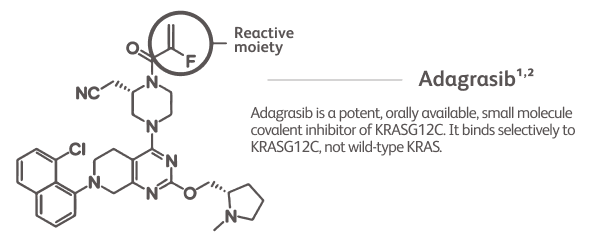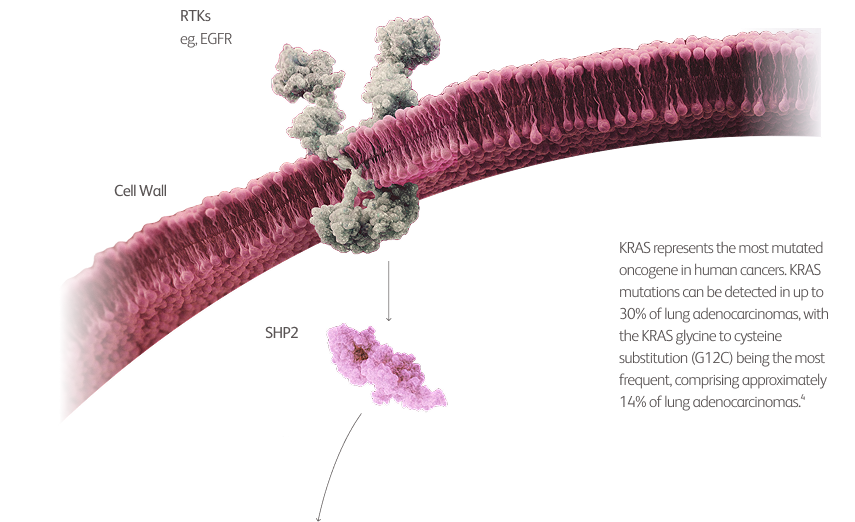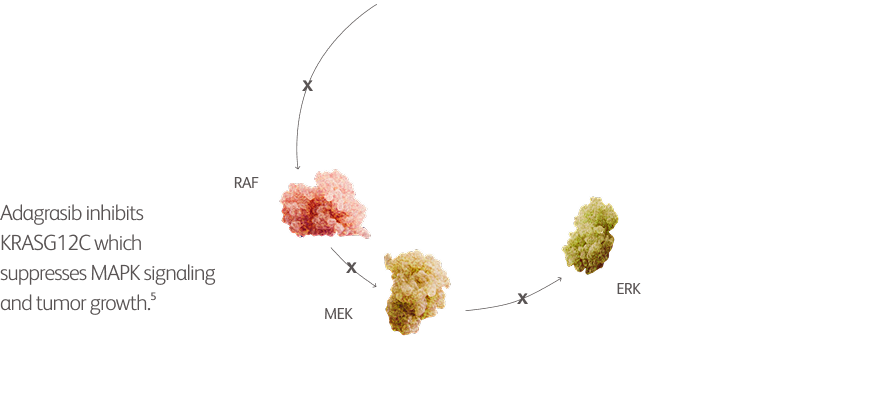Proposed Mechanism of Action of Adagrasib


Proposed Mechanism of Action of Adagrasib
Novel CELMoD agents, also called next-generation IMiD® agents, are purposefully designed to enhance targeted protein degradation vs classic IMiD agents in multiple myeloma.
cereblon is co-opted
Novel CELMoD agents iberdomide and mezigdomide are biochemically distinct molecules that bind to cereblon with higher specificity and affinity than classic IMiD agents.1-5,*

Enhancing targeted protein degradation
Co-opting cereblon induces deeper and more rapid targeted degradation of key proteins important for myeloma cell growth and survival compared with classic IMiD agents.1-5,*

Leading to potent anti-myeloma effects
By enhancing targeted protein degradation with high efficiency, novel CELMoD agents can directly kill myeloma cells and stimulate the immune system.1-5

EGFR = epidermal growth factor receptor; ERK = extracellular signal-regulated kinase; GDP = guanosine diphosphate; GTP = guanosine triphosphate; MAPK = mitogen-activated protein kinase; MEK = mitogen-activated protein kinase; RAF = rapidly accelerated fibrosarcoma; RTK = receptor tyrosine kinase; SHP2 = Src homology region 2-containing protein tyrosine phosphatase 2
References:
- Hallin J, et al. Cancer Discov 2020;10:54–71.
- Fell JB, et al. J Med Chem 2020;63:6679–6693.
- Mok TSK, et al. Oral presentation at the ASCO Annual Meeting; May 31–June 4, 2024; Chicago, IL, USA.
- Simanshu DK, Nissley DV, McCormick F. RAS proteins and their regulators in human disease. Cell 2017;170:17-33.
- Garassino, M.C. et al. Annals of Oncology, Volume 35, S872 - S873